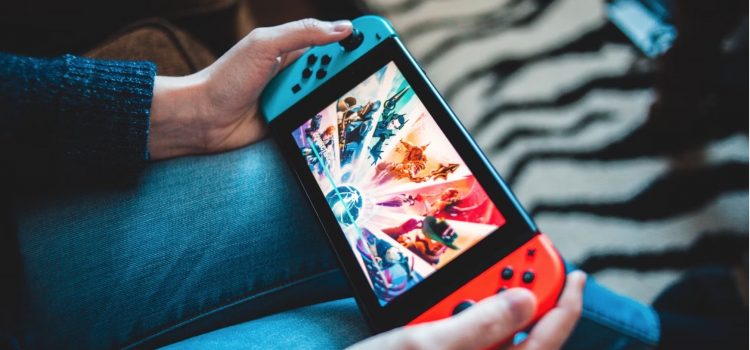

This article is an excerpt from the Shortform book guide to "Actionable Gamification" by Yu-kai Chou. Shortform has the world's best summaries and analyses of books you should be reading.
Like this article? Sign up for a free trial here.
How can using collectibles enhance your gamification mechanics? What are the best strategies for integrating collectibles into games?
According to gamification consultant Yu-kai Chou, gamification mechanics are the backbone of the player motivation system in games. One such mechanic is cultivating a sense of ownership through the use of collectibles, which encourages players to continue playing and investing in the game.
Read on to learn about the gamification mechanics of collectibles, according to Chou.
The Gamification Mechanics of Collectibles
According to gamification consultant Yu-kai Chou, one of the motivations for players to keep playing a game is a desire to own and accumulate things. In his book Actionable Gamification, Chou asserts that people tend to care about something more when they feel it’s their own. This is even true for virtual items and currency that only exist within a game, like collectible rings in Sonic the Hedgehog. Therefore, you can encourage players to invest themselves more deeply in a game by giving them a chance to own and accumulate things, and he offers three gamification mechanics for achieving this: instilling a sense of ownership, creating collection sets, and restricting availability.
1) Instill a Sense of Ownership
Chou recommends that you can motivate players to engage in your gamification system by instilling in them a sense of ownership. People are naturally more attached to something if they feel it belongs to them. Chou offers two strategies for cultivating a sense of ownership: Let players customize items, and make players feel like something already belongs to them.
First, players are more likely to feel a sense of ownership over something if they can customize it. Every time you let players make choices—even small cosmetic ones—they are investing their creativity and effort into something and “making it their own.”
Second, you can get a player to feel a sense of ownership if you frame the item as a prize or reward—something they’ve won or earned. Some gamification systems utilize this by requiring players to take certain actions to “keep” their rewards. The success of these gamification mechanics depends on whether players feel a genuine sense of ownership. For example, mail-based marketing tactics will often tell readers that they’ve “already won” a prize, they just need to claim it. Then claiming the prize requires complying with the goals of the marketing campaign.
| Why Do People Overrate the Things They Own? Cultivating ownership encourages people to continue investing in games because, as research shows, people tend to overestimate the value of things that they own. In Predictably Irrational, Dan Ariely offers three reasons why people tend to overvalue their possessions. 1. People become emotionally attached to familiar things. Therefore, the longer you own something, the more attached to it you can become. 2. People focus on potential losses more than potential gains. Because they are naturally oriented to avoid loss, they will work harder to hold onto something than to gain something else of equal value. 3. People assume that others share their perception. This means that if something is valuable to you, you’ll likely assume that it’s equally valuable to others even though they aren’t influenced by the same loss-aversion and ownership bias. |
2) Group Objects Into Collectable Sets
The next gamification mechanic Chou focuses on is making an object more desirable by making it part of a collectible set. Many players will have a strong drive to complete a set once they already have some of the items. For example, if trading cards are grouped into sets of colors, many collectors will be more attracted to a card if it belongs to a set of which they already have a few cards. Companies that sell collectible coins also often group them into sets to encourage collectors to buy the whole set.
(Shortform note: To most effectively leverage the motivational power of collectible sets, it helps to understand why so many people collect things in the first place. While many psychologists find the origins of the impulse mysterious, some have posited a few key drives that inspire collectors. Some collectors are drawn to rare and unique items because they find it satisfying to own something distinct that few others own. Others like the idea of bringing rare things together that previously existed apart. Still others enjoy the satisfaction of organizing their collections to create a sense of order. Finally, many collectors are motivated by the sense of anticipation at finding and obtaining some new object: It’s the thrill of the chase.)
3) Restrict Availability
Chou stresses that you can also make an object more desirable by restricting its availability. People naturally place a higher value on something scarce, so by limiting the availability of an object, you can increase its value. The more difficult something is to obtain, the more desirable it can become.
Chou recommends two ways you could incorporate this gamification mechanic into your gamification system. First, you could offer a lure by showing a valuable reward that can only be obtained through great time and effort. This will reinforce the desirability of the reward in the player’s mind. So if you offer customers a tiered set of prizes in a loyalty rewards program, show them the biggest available prize to reinforce its desirability.
Second, you can leverage the motivating power of scarcity by reducing the available time to take an action or claim a reward. By narrowing an opportunity’s availability, you will increase its value in the player’s mind. For example, if a player wins a reward, you could restrict the times at which they are able to claim it, forcing them to come back later to collect.
You can also present your player with a vanishing opportunity, then provide a deadline or a countdown timer showing when the opportunity disappears. This is why many old arcade games give their players 10 seconds to continue their game with another quarter after running out of lives. Many marketing campaigns have adopted this strategy of making their offers available for only a limited time.
| How Scarcity Motivates Us In Influence, Robert B. Cialdini expands on why restricting availability makes something more desirable. He identifies two key principles at work. First, many people use availability as a shorthand for value. Caldini attributes this to the laws of supply and demand—if there’s a high demand for something but not very much of it, then the price increases. However, the scarcity of an item doesn’t actually tell us anything about its demand. A rare item could be highly desired and therefore valuable, or it could just be rare and unwanted. Second, Caldini argues that people want what is scarce because of a phenomenon called “psychological reactance.” This occurs when people feel resentment at having their choices limited and therefore react against the limitation. When people can’t have something, they feel that their freedom is being restricted. Therefore, they try to push back on the restrictions—in this case by trying to get the very thing they feel they’re “not allowed” to have. |

———End of Preview———
Like what you just read? Read the rest of the world's best book summary and analysis of Yu-kai Chou's "Actionable Gamification" at Shortform.
Here's what you'll find in our full Actionable Gamification summary:
- How to use gamification to grow your business
- Why some gamification systems are addictive and others fail
- How to keep players engaged and motivated






